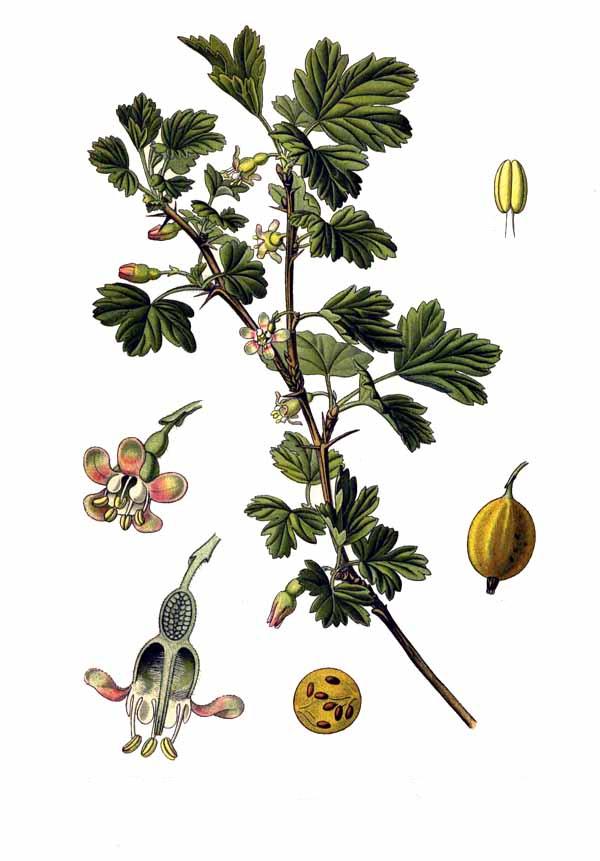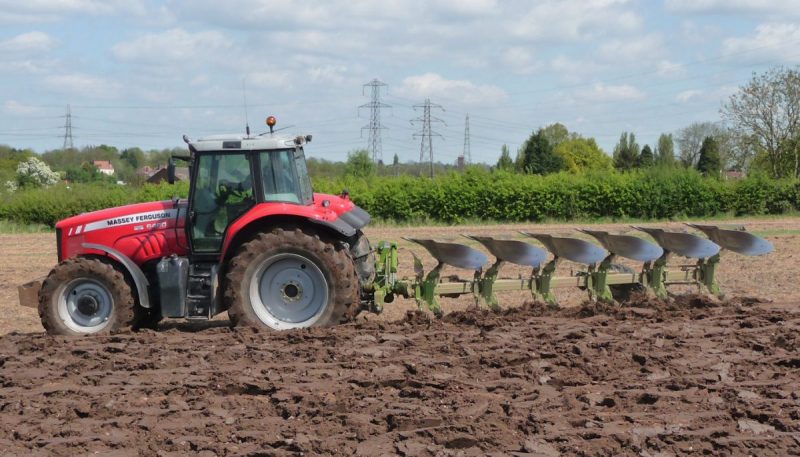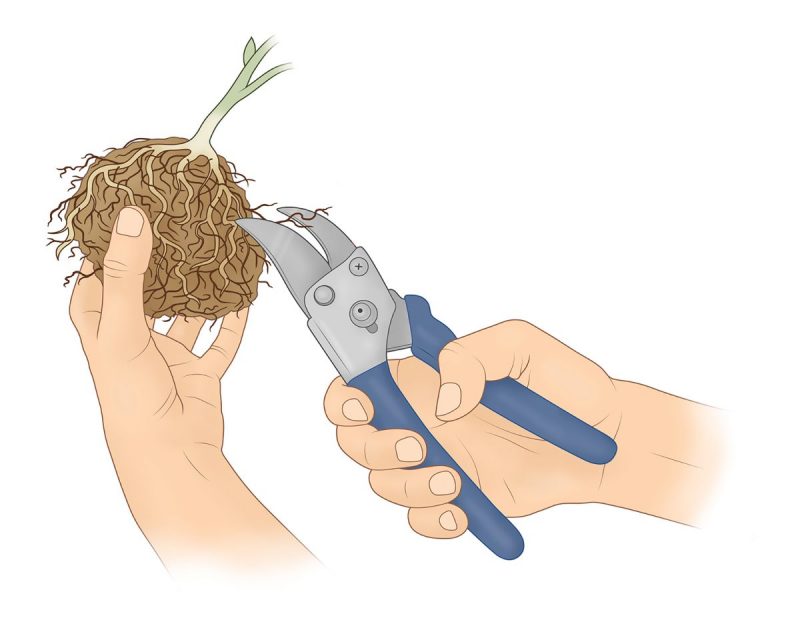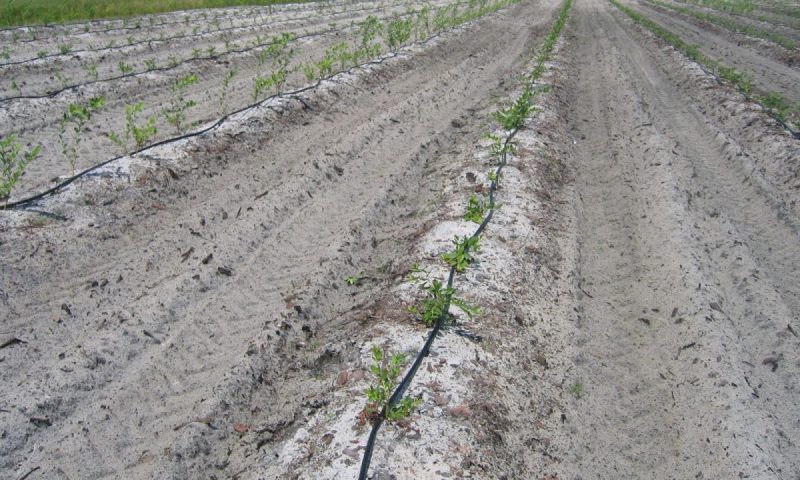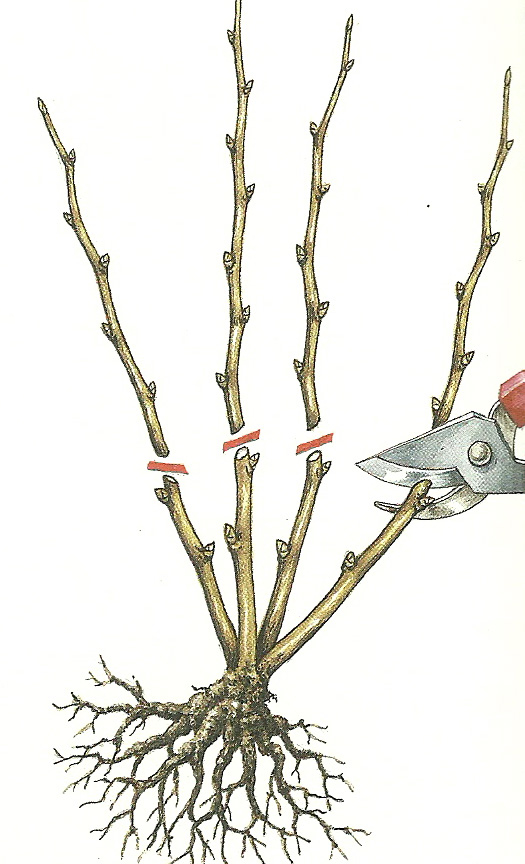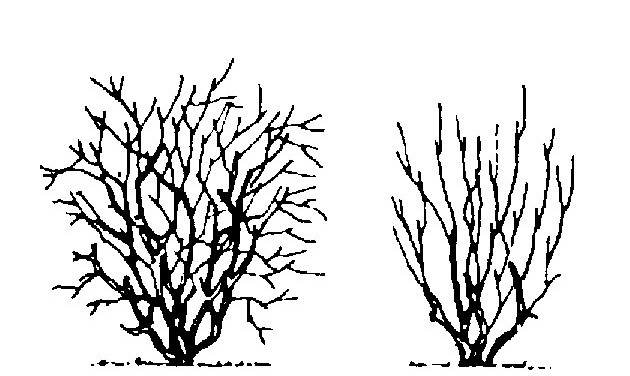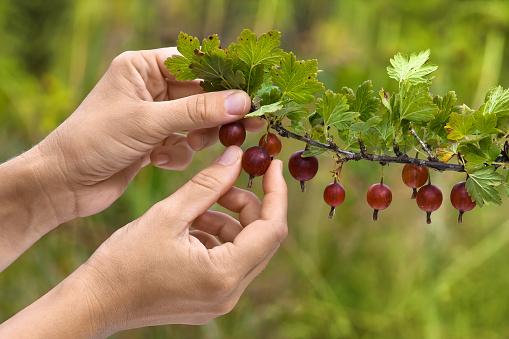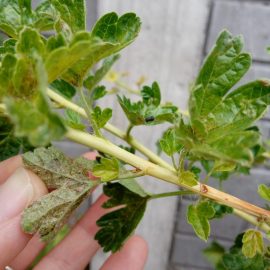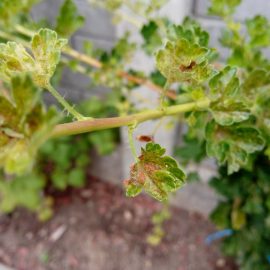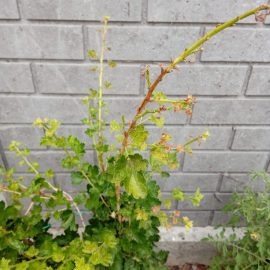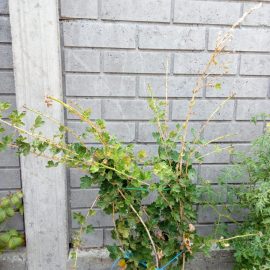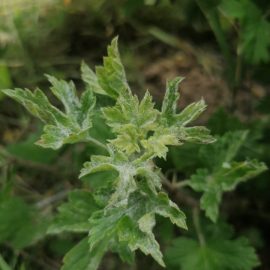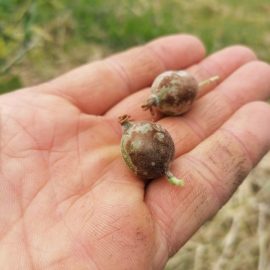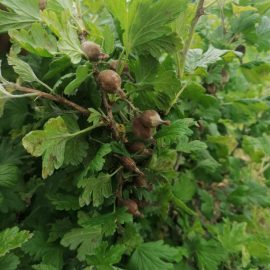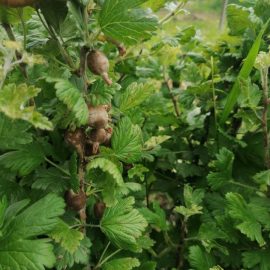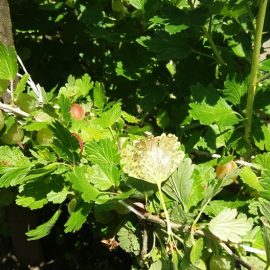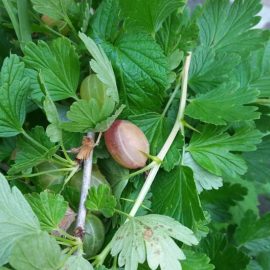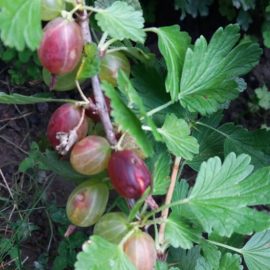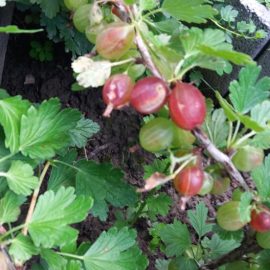Gooseberry, planting, growing and harvesting
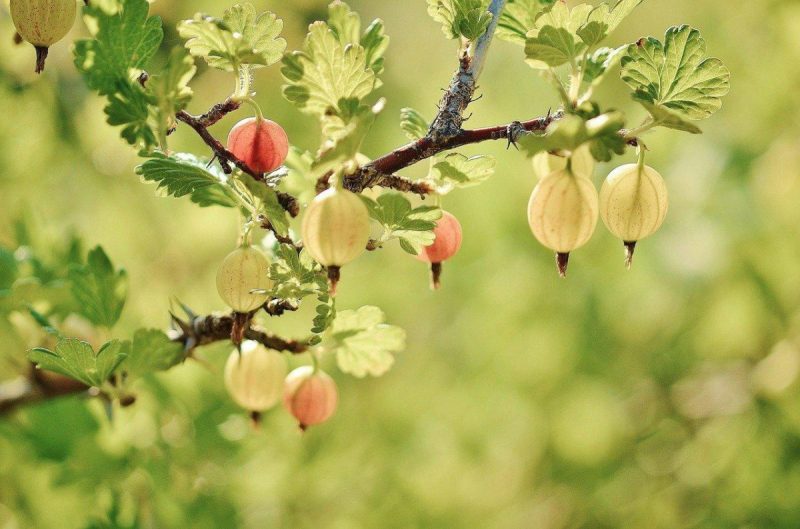
Gooseberry or European gooseberry (Ribes uva-crispa) is a fruit-bearing shrub that is part of the Grossulariaceae family. It grows spontaneously in the hilly and mountainous areas. The importance of gooseberry cultivation is given by the content of its fruits, which are rich in vitamins and mineral salts (citric acid, malic acid, tartaric acid, cellulose, calcium, iron, phosphorus, potassium, sugars, vitamin C, A, B1, B2, P).
This species has a wide range, being found in Europe, Asia, and North America, and in some areas, it is present up to the alpine floor.
Botanical characteristics
Gooseberry is a bush-shaped rustic shrub, with numerous stems that grow up to a height of 1-1.5 meters. The bark has a grey color and may or may not have thorns, depending on the variety. The short, bouquet-type fruit-bearing branches are usually formed on the 2-3-year-old stems.
The stems have vegetative buds or mixed buds. The buds are conical and alternately arranged. On the upper part of the buds, the scales are open. The flowers are hermaphroditic, small, and greenish. Flowering takes place in early spring, and insects do pollination. The leaves are lobed, 2-6 cm long, and maybe glabrous or may present small hairs. The fruits are globular, have a sour taste, and reach maturity for consumption between June and July.
Environmental requirements
European gooseberry prefers a humid and cool climate and has low requirements for temperature. The optimal values for the vegetative growth period are between 15 and 25 ℃. In winter it can withstand temperatures of -32 ℃, and during the summer it cannot tolerate temperatures higher than 40 ℃. If the temperature exceeds 30 ℃, the shrub begins to wither, even if the soil moisture has optimal values.
The shrub prefers areas with 700 mm of annual rainfall but does not tolerate excess soil moisture. The critical period regarding water supply is in the phase of fruit growth and maturation. The requirements for light are high. To obtain high yields of good quality, you need to ensure sufficient sunlight. Gooseberry does not tolerate saline soils and grows well on light, and medium soils, well supplied with mineral elements, with a pH between 4.6 and 5. The groundwater level must be below 1.2 meters.
Soil preparation
The plot must be protected from cold drafts and strong winds. In warmer areas, plots should be selected along river valleys to create a favorable microclimate. In hilly areas, choose land with a western or eastern exposure, and in the foothills, choose plots with a southern exposure. Soil tillage should be carried out 1-3 months before establishing the gooseberry plantation. Scarification must be done at 40-50 cm, followed by plowing at a depth of 25-35 cm. With these operations, apply basic fertilization with NPK chemical fertilizers. Organic fertilizers can be applied locally in the planting hole.
Recommended products
-
You can find products on a different store
Change Store -
You can find products on a different store
Change Store -
You can find products on a different store
Change Store -
You can find products on a different store
Change Store -
You can find products on a different store
Change Store -
You can find products on a different store
Change Store -
You can find products on a different store
Change Store -
You can find products on a different store
Change Store -
You can find products on a different store
Change Store -
You can find products on a different store
Change Store -
You can find products on a different store
Change Store -
You can find products on a different store
Change Store -
You can find products on a different store
Change Store -
You can find products on a different store
Change Store -
You can find products on a different store
Change Store -
You can find products on a different store
Change Store -
You can find products on a different store
Change Store -
You can find products on a different store
Change Store -
You can find products on a different store
Change Store -
You can find products on a different store
Change Store -
You can find products on a different store
Change Store -
You can find products on a different store
Change Store -
You can find products on a different store
Change Store -
You can find products on a different store
Change Store
Planting
The best time to plant is in autumn, at the end of October. If, for some reason, planting is not possible in autumn, it can be done in early spring. Planting distances must be chosen depending on the applied crop technology and the vigor of the gooseberry varieties. Thus, it is recommended 2.5-3 m distance between rows and 0.8-1 m between plants per row for low-vigor varieties. In the case of high-vigor varieties, the distance between plants per row increases to 1.2-1.5 m. After the planting scheme has been established, the field must be staked, which consists of marking the planting places with stakes.
The next steps are digging holes and planting the gooseberry plants. The pits must have dimensions of 40 x 40 x 40 cm and can be made by hand or with drills.
Before planting, the planting material should be trimmed, removing dry or damaged roots. To encourage the shrubs to grip, place them with their roots in a slurry made of yellow soil, cattle manure, and water, with the consistency of cream.
Planting has to be done in such a way that the roots are laid flat in the hole and the plant has to be vertical. After planting, the soil around the shrub must be compacted to ensure the best possible contact between soil and roots. It is recommended to mulch the soil with sawdust in strips 1.2 m wide along the plant rows. The open spaces between the mulched strips should be cultivated with clover or grass species, starting in the 4th year after planting.
Maintenance work
During the first 2 to 3 days after planting, you should pay special attention to soil maintenance. Remove weeds by shallow tilling or hoeing so that the plants benefit from sufficient water and mineral elements. From the 4th year onwards, the interval between rows can be cultivated with perennial grasses. These should be mown repeatedly when they reach a height of 15-20 cm.
To achieve high yields, irrigation is necessary during periods of prolonged drought. During the growing season apply 5-7 irrigations, with a norm of 350-400 cubic metres per hectare. Drip or sprinkler irrigation methods are recommended. The plants must be constantly watered, as the gooseberry does not have a deep root system, and roots affected by drought are permanently destroyed.
Additional fertilization is also necessary to achieve economic yields. Annually it is recommended to apply balanced NPK chemical fertilizers, and the doses should be calculated according to the desired yield and the soil supply. It is advisable to apply the fertilizers in 2-3 sessions, between the bud break and mid-June. Foliar fertilization or fertilization with water-soluble fertilizers can also be used when using drip irrigation.
Recommended products
-
You can find products on a different store
Change Store -
You can find products on a different store
Change Store -
You can find products on a different store
Change Store -
You can find products on a different store
Change Store -
You can find products on a different store
Change Store -
You can find products on a different store
Change Store -
You can find products on a different store
Change Store -
You can find products on a different store
Change Store -
You can find products on a different store
Change Store -
You can find products on a different store
Change Store -
You can find products on a different store
Change Store -
You can find products on a different store
Change Store -
You can find products on a different store
Change Store -
You can find products on a different store
Change Store -
You can find products on a different store
Change Store -
You can find products on a different store
Change Store -
You can find products on a different store
Change Store -
You can find products on a different store
Change Store -
You can find products on a different store
Change Store -
You can find products on a different store
Change Store -
You can find products on a different store
Change Store -
You can find products on a different store
Change Store -
You can find products on a different store
Change Store -
You can find products on a different store
Change Store
Pest and disease control
Pest control represents an important link in the gooseberry crop technology. Among the main diseases encountered in this shrub, we mention powdery mildew, anthracnose, and rust, while the most frequently encountered pests are aphids and goat moths.
Pruning
This operation is designed to facilitate maintenance work and to promote fruiting. The pruning in the first years aims to form the shrub crown.
Recommended products
-
You can find products on a different store
Change Store -
You can find products on a different store
Change Store -
You can find products on a different store
Change Store -
You can find products on a different store
Change Store -
You can find products on a different store
Change Store -
You can find products on a different store
Change Store -
You can find products on a different store
Change Store -
You can find products on a different store
Change Store -
You can find products on a different store
Change Store -
You can find products on a different store
Change Store -
You can find products on a different store
Change Store -
You can find products on a different store
Change Store -
You can find products on a different store
Change Store -
You can find products on a different store
Change Store -
You can find products on a different store
Change Store -
You can find products on a different store
Change Store -
You can find products on a different store
Change Store -
You can find products on a different store
Change Store -
You can find products on a different store
Change Store -
You can find products on a different store
Change Store -
You can find products on a different store
Change Store -
You can find products on a different store
Change Store -
You can find products on a different store
Change Store -
You can find products on a different store
Change Store
How to form a bush-shaped gooseberry?
Immediately after planting, shorten the stems to a height of 20 cm. In this way, the shrub will form more new and more vigorous stems. Then, in the second year, choose 3-4 vigorous stems and shorten 30% of their length. In the following years (3, 4, 5), choose 3-4 stems and proceed in the same way. The shortened stems in these years will form the shrub crown. In these years do not apply any further pruning.
How to form a trunk-shaped gooseberry?
After planting, shorten the stems to 2-7 buds. In the spring of the second year, choose 3-4 branches, evenly distributed in the crown shorten 30% of their length, and remove the rest of the growth. In the spring of the third year follow the same procedure as in the second year. If in the fourth year, there is no new growth longer than 15 cm, apply severe pruning to stimulate vigorous growth. In the fifth year, 3-4 new branches are chosen, which will be shortened by 30% of their length, and these will complete the shrub crown.
Pruning after crown formation aims to form new branches, which bear numerous fruit buds. This work also aerates the crown, and the leaves benefit from optimal solar radiation. Fruiting pruning should be carried out in February before the first leaves appear. Remove branches older than five years and keep about 12 young branches (2-3 years old). These should be reduced by two-thirds of their original length. Remove branches growing inside the crown and those growing close to the ground, as well as branches affected by frost or pathogens.
Gooseberry harvesting
Harvesting can be done according to the yield destination. If the fruit is intended for processing, it should be harvested in May, when the fruit is still green. If the fruit is intended for fresh consumption, it must be harvested when fully ripe, when the fruit’s skin is transparent, the flesh is soft and it has a specific aroma and taste. The fruit must be harvested with the stalk, in dry and cool weather, by hand or with machines that shake the bushes.














































































































































































































































































































































































































































